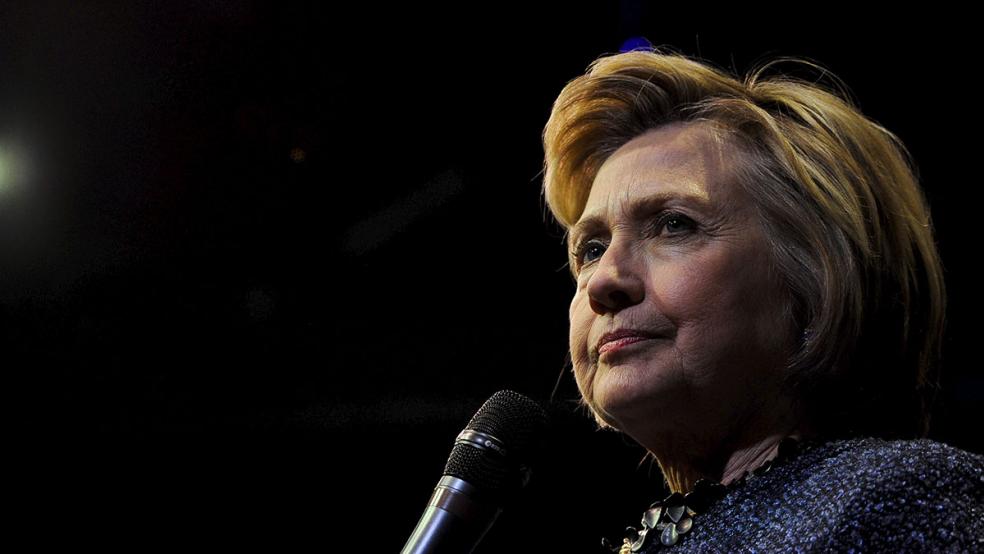Women’s issues promise to play an outsize role in this year’s presidential election now that the field has been narrowed to a feminist icon and a suspected misogynist. But the debate over women’s health, equal pay and family leave will continue to obscure an underreported fact: as a gender, men are in relative decline.
A key indicator of American male decline is the gender ratio at U.S. colleges. According to the National Center for Education Statistics (NCES), women accounted for 43 percent of enrollees in degree-granting postsecondary institutions in 1972. The other 57 percent were men. Forty years later, the ratio had flipped. In 2012, the latest year for which actual data were reported, women made up 57 percent of the college population, with men representing the remaining 43 percent. Further, NCES projects that the gap will widen by 2022, when women are expected to reach 61 percent of the college population. If that projection holds, America will have roughly 14 million female college students and only 10 million male college students.
Related: Hillary Clinton Plays the Woman Card and Rakes in Millions
An additional NCES chart shows the percentage of 18 to 24-year-old men and women in degree-granting institutions. In the 1960s and 1970s, men were significantly more likely to be in college than women. Around 1990, the proportions reached parity. Since then, a higher percentage of women have been going to college than men, with the gap reaching 7 percent in 2012, when 44.5 percent of women and 37.6 percent of men were enrolled.
Female students are also more likely to finish college than their male counterparts. More than six in 10 women enrolling in college in 2006 graduated by 2012; the similar proportion for men was only 56.5 percent. This fact contributes to female superiority in post-graduate education, with women earning 60 percent of the master’s degrees and 51 percent of doctorates in the 2011-2012 academic year.
So, if men are now underrepresented in higher education, where might they be? One place is in prison. At the end of 2014, almost 93 percent of inmates in state and federal correctional facilities were male. There were over 1.4 million male prisoners compared to 113,000 female inmates.
If we add inmates in city and county jails as well as those on probation or parole, the gap widens. The Bureau of Justice Statistics estimates that 5.56 million men were in the correctional system at the end of 2014, versus 1.25 million women.
While men have always dominated the correctional population, they have suffered disproportionately in today’s era of mass incarceration. The correctional population skyrocketed from 1.84 million in 1980 to 7.31 million in 2009 before declining somewhat in more recent years.
Related: Trump Plays the ‘Woman Card’ Against Hillary. Will it Backfire?
Since greater education and less incarceration both correlate with higher income, we can expect women’s share of the pie to grow in coming years. According to Bureau of Labor Statistics data, women’s median weekly earnings as a percentage of men’s median weekly earnings rose from 62.3 percent in 1979 to 82.5 percent in 2014. Among younger age cohorts, the ratio is around 90 percent — and much of the remaining difference is explained by child rearing. A comparison of single, childless men and women between ages 22 and 30 living in metropolitan areas showed virtually no wage gap.
In an influential 2010 article in The Atlantic, Hanna Rosin documented and explained a phenomenon she called “The End of Men.” Her thesis was that technological and social changes are making men obsolete. Modern industrial machinery rendered male advantages in physical size and strength irrelevant, while 21st century jobs more often require attributes associated with women — including social intelligence, open communication and the ability to concentrate. Rosin interviewed many female college students who expected to be the primary breadwinner after marriage, with one referring to guys as “the new ball and chain.”
Psychologist Warren Farrell attributes the relative decline in men’s wellbeing to social policies and conditions for raising boys. For example, Farrell and his colleagues point out that one-third of boys grow up in households where the father is absent and are thus deprived of their most important male role model. Schools have curtailed boy-friendly programs such as recess (which encourages physical activity) and vocational education. Psychiatrists too frequently address boys’ normal restlessness by prescribing Ritalin and other drugs with dangerous side effects. Teenage boys and young men in their early 20s suffer from much greater levels of depression than their female counterparts, as evidenced by male suicide rates four times higher than female suicide rates.
Related: How Obamacare Could Backfire on Hillary Clinton
All this notwithstanding, it is clear that men continue to benefit from some unfair advantages. For example, they dominate the high-paying tech sector, often creating work environments that are hostile to women. Also, women are underrepresented at the highest echelons of our society — accounting for only 5 percent of Fortune 500 CEOs and 19 percent of Congress.
But these are relatively small niches of society. Most young women finishing college and starting careers may not feel especially disadvantaged compared to their male counterparts. As a result, they may not regard women’s issues as their highest priority. Maybe this explains why Bernie Sanders is more popular than Hillary Clinton with females aged 18 to 29.
This factor could also undermine Clinton’s support among young women in November. While most of them are unlikely to vote for Trump, they may not be sufficiently motivated to turn out on Election Day. Longer term, it is possible that women’s issues will play a diminishing role in elections at all levels as millennials begin to dominate the electorate. Perhaps then it will become politically feasible for our leaders to address some of the issues contributing to the decline of men.






